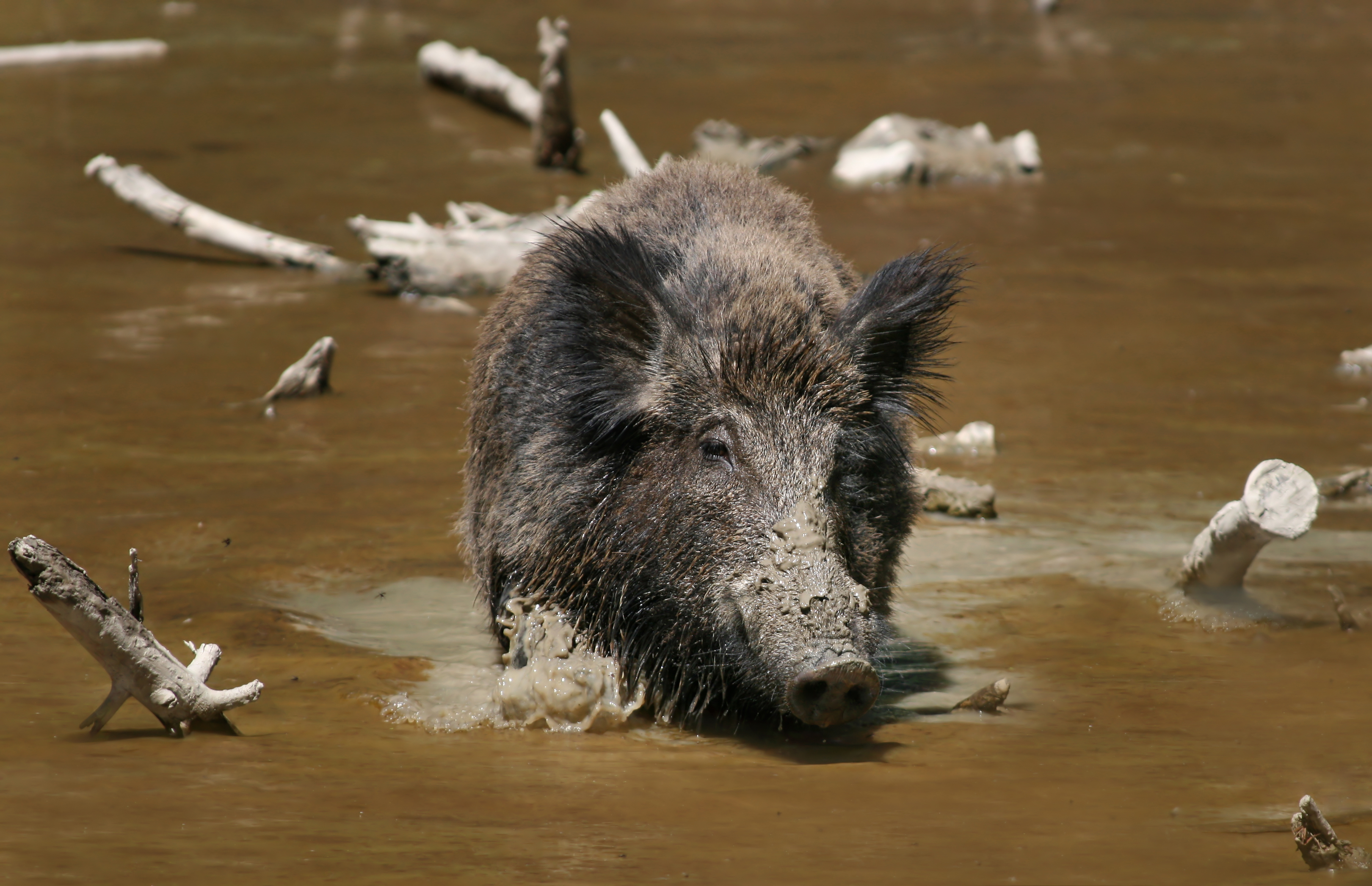 "Few purebred Eurasian wild boars are left today, but they hybridized with feral domestic hogs and continue to spread. All are interchangeably called wild or feral hogs, pigs or boars; in this context 'boar' can refer to a male or female. (Technically, 'feral' refers to animals that can be traced back to escaped domestic pigs, while the more all-encompassing 'wild' refers to any non-domestic animals.)"
"Few purebred Eurasian wild boars are left today, but they hybridized with feral domestic hogs and continue to spread. All are interchangeably called wild or feral hogs, pigs or boars; in this context 'boar' can refer to a male or female. (Technically, 'feral' refers to animals that can be traced back to escaped domestic pigs, while the more all-encompassing 'wild' refers to any non-domestic animals.)"Morthland, you'll notice throws in a lot of terms -- purebred, hybridized, feral and wild, for example -- and then says they all mean pretty much the same thing when you're talking about wild hogs. Even the word boar applies equally to both male and female wild hogs.
A Wikipedia article on the subject goes further: "The term 'boar' is used to denote an adult male of certain species, including domestic pigs. However, for wild boar, it applies to the whole species, including, for example, 'wild boar sow' or 'wild boar piglet.'"
I find it interesting that the author of the Wikipedia article refers to wild boar as a separate species, even though most of them, as Morthland writes, are either runaway domestic hogs or hybridized with the few purebred boars.
Even the words pig and hog seem to mean something different when talking about wild boar. In domestic agriculture, a pig becomes a hog when it reaches 120 pounds. Also in domestic agriculture, a boar is an uncastrated male. Among wild boar, however, all are boars, all are both pigs and hogs, all are both wild and feral and all, at least according to Wikipedia, belong to their own distinct species.
Wild hogs are apparently so wild that the usual definitions just don't apply.
No comments:
Post a Comment